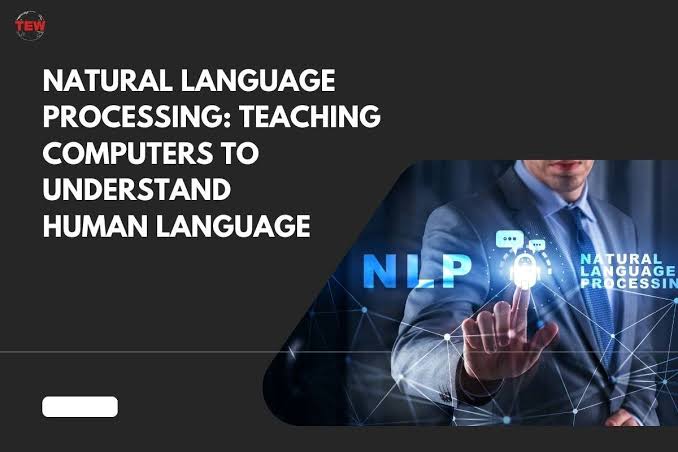In realm of artificial intelligence (AI) one of most intriguing and complex fields is Natural Language Processing (NLP). At its core, NLP is science of enabling machines to comprehend interpret. And respond to human language in way that is both meaningful and contextually relevant. This interdisciplinary field draws from computer science, linguistics and artificial intelligence. It aims to bridge gap between human communication and machine understanding.
At its inception NLP focused on fundamental tasks such as text parsing and syntactic analysis. Language generation was also important. These tasks formed the building blocks for more advanced applications. They laid groundwork for modern NLP systems. Early approaches relied heavily on rule-based systems and linguistic theories to process text. They often struggled with nuances in human language such as ambiguity, context dependence and figurative speech.
The landscape of NLP underwent significant shift with advent of statistical approaches and machine learning algorithms. Instead of relying solely on predefined rules researchers began leveraging large corpora of text data. They trained models that could automatically learn patterns and relationships within language. This data-driven approach revolutionized NLP. It enabled systems to handle more complex tasks. These tasks included sentiment analysis, named entity recognition and machine translation.
The Role of Machine Learning in Natural Language Processing
Machine learning algorithms, particularly supervised and unsupervised learning techniques, play a pivotal role in modern NLP. Supervised learning involves training models on labeled datasets, where the algorithm learns to map input text to specific outputs (e.g., sentiment labels). In contrast, unsupervised learning techniques, such as clustering and topic modeling, extract patterns and structures from unlabeled data, facilitating tasks like document summarization and content recommendation.
Deep Learning: Transforming NLP with Neural Networks
The advent of deep learning, powered by neural networks, marked a significant breakthrough in NLP. Deep neural networks, especially Recurrent Neural Networks (RNNs) and Transformers, excel at capturing intricate linguistic features and long-range dependencies in text. These models have propelled the field forward, achieving state-of-the-art performance in tasks such as language modeling, text generation, and question answering systems.
Practical Applications of Natural Language Processing
The real-world applications of NLP span across various industries and domains, revolutionizing how we interact with technology:
Conversational AI and Virtual Assistants
Conversational AI platforms like chatbots and virtual assistants leverage NLP to understand user queries, provide relevant information, and engage in natural, human-like conversations. These systems integrate speech recognition, language understanding, and dialogue management to deliver seamless user experiences across different platforms.
Sentiment Analysis and Opinion Mining
Businesses utilize sentiment analysis tools to gauge public opinion, analyze customer feedback, and monitor brand reputation. NLP models trained on social media data and customer reviews can accurately classify sentiments as positive, negative, or neutral, enabling companies to make data-driven decisions and enhance customer satisfaction.
Language Translation and Multilingual Applications
NLP enables automatic language translation, breaking down barriers between languages and cultures. Advanced translation models like Google Translate and DeepL utilize neural networks to achieve near-human translation accuracy, facilitating global communication and cross-cultural exchange on a scale never before possible.
Healthcare and Biomedical Research
In healthcare, NLP plays a crucial role in analyzing medical texts, extracting information from electronic health records (EHRs), and assisting in clinical decision-making. NLP-driven applications can automate medical coding, identify disease patterns from patient records, and accelerate biomedical research by analyzing vast amounts of scientific literature.
Challenges and Limitations in Natural Language Processing
Despite its rapid advancements, NLP still faces several challenges that hinder its full potential:
Ambiguity and Contextual Understanding
Human language is inherently ambiguous and context-dependent, posing challenges for NLP systems in accurately interpreting meaning across different contexts and linguistic nuances.
Bias and Fairness Issues
NLP models trained on biased datasets can perpetuate societal biases, leading to unfair or discriminatory outcomes in automated decision-making processes. Addressing bias and promoting fairness in NLP remains a critical area of research and development.
Multilingual and Cross-lingual Understanding
Achieving robust multilingual capabilities remains a challenge in NLP, as languages vary significantly in structure, syntax, and cultural context. Developing models that generalize across languages while preserving linguistic diversity is an ongoing research area.
Privacy and Ethical Considerations
The widespread deployment of NLP in sensitive domains such as healthcare and finance raises concerns about data privacy, security, and ethical implications. Safeguarding user data and ensuring transparent, ethical use of NLP technologies are paramount concerns for researchers and practitioners alike.
Future Directions and Emerging Trends in NLP
Looking ahead, several emerging trends are poised to shape the future of NLP:
Continual Advancements in Deep Learning
Further advancements in deep learning architectures, including more efficient Transformers and attention mechanisms, will continue to push the boundaries of NLP performance across various tasks.
Integrating NLP with Knowledge Graphs and Structured Data
Combining NLP with knowledge graphs and structured data sources enables more robust information retrieval, reasoning, and decision-making capabilities, enhancing the semantic understanding and contextual relevance of NLP applications.
Zero-shot and Few-shot Learning
Zero-shot and few-shot learning techniques allow NLP models to generalize to new tasks and languages with minimal training data, offering greater flexibility and adaptability in diverse real-world scenarios.
Ethical AI and Responsible Deployment
Addressing ethical challenges and ensuring responsible deployment of NLP technologies will become increasingly important. Initiatives focused on bias mitigation, fairness, and transparency in AI systems are critical for building trust and fostering ethical AI practices.
Conclusion
In conclusion, Natural Language Processing represents a dynamic and rapidly evolving field at the intersection of linguistics, computer science, and artificial intelligence. From its humble beginnings in rule-based systems to the era of deep learning and neural networks, NLP has transformed how machines understand and interact with human language. As researchers continue to tackle challenges and explore new frontiers, the future of NLP holds promise for revolutionizing industries, enhancing user experiences, and advancing the capabilities of AI-driven technologies in the years to come.
